Special Topics
Buddhist Sutras and Scriptures
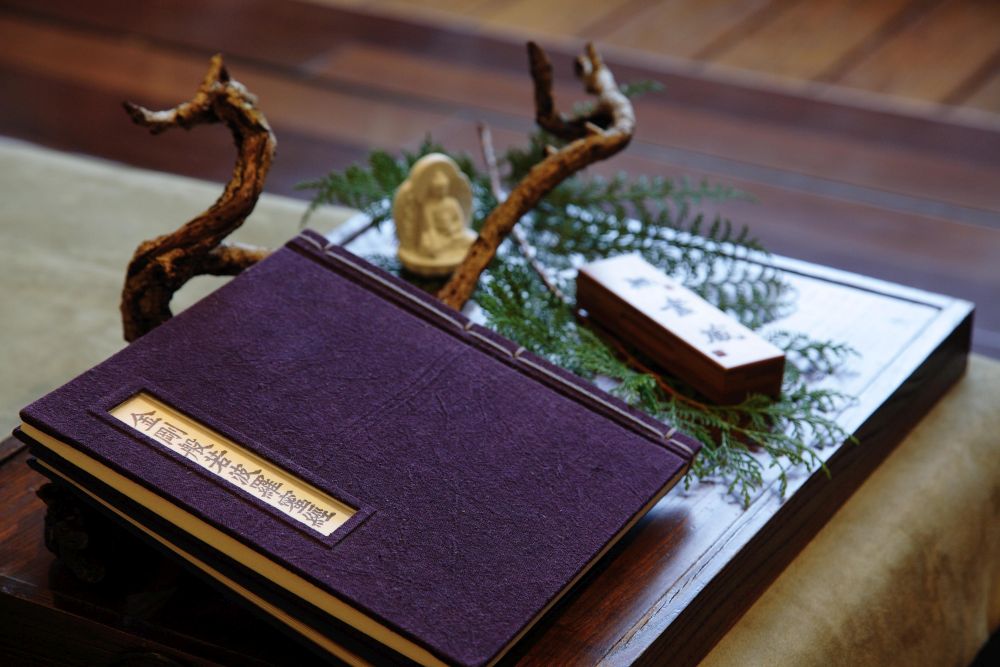 Many Buddhists recite the Heart Sutra, the Great Compassion Dharani, and the 'Chapter on the Universal Gate of Avalokitesvara Bodhisattva' in the Lotus Sutra, when they encounter difficulties or feel unease. Some always carry a Buddhist scripture with them, believing it will bring them peace of mind.
Many Buddhists recite the Heart Sutra, the Great Compassion Dharani, and the 'Chapter on the Universal Gate of Avalokitesvara Bodhisattva' in the Lotus Sutra, when they encounter difficulties or feel unease. Some always carry a Buddhist scripture with them, believing it will bring them peace of mind.Scriptures record various contents from the Buddha's teaching. The benefits of reciting them also vary from sutra to sutra. In Chan Buddhism, the most popular and widespread sutras include the Heart Sutra, the Chapter on the Universal Gate of Avalokitesvara Bodhisattva in the Lotus Sutra, the Sutra on Ksitigarbha Bodhisattva's Fundamental Vows, Dharaṇi of the Bodhisattva With a Thousand Hands and Eyes Who Regards the Worldʼs Sounds with Great Compassion, the Diamond Sutra, the Shorter Sukhavativyuha Sutra, the Samantabhadra Meditation Sutra, as well as the Great Compassion Dharani.
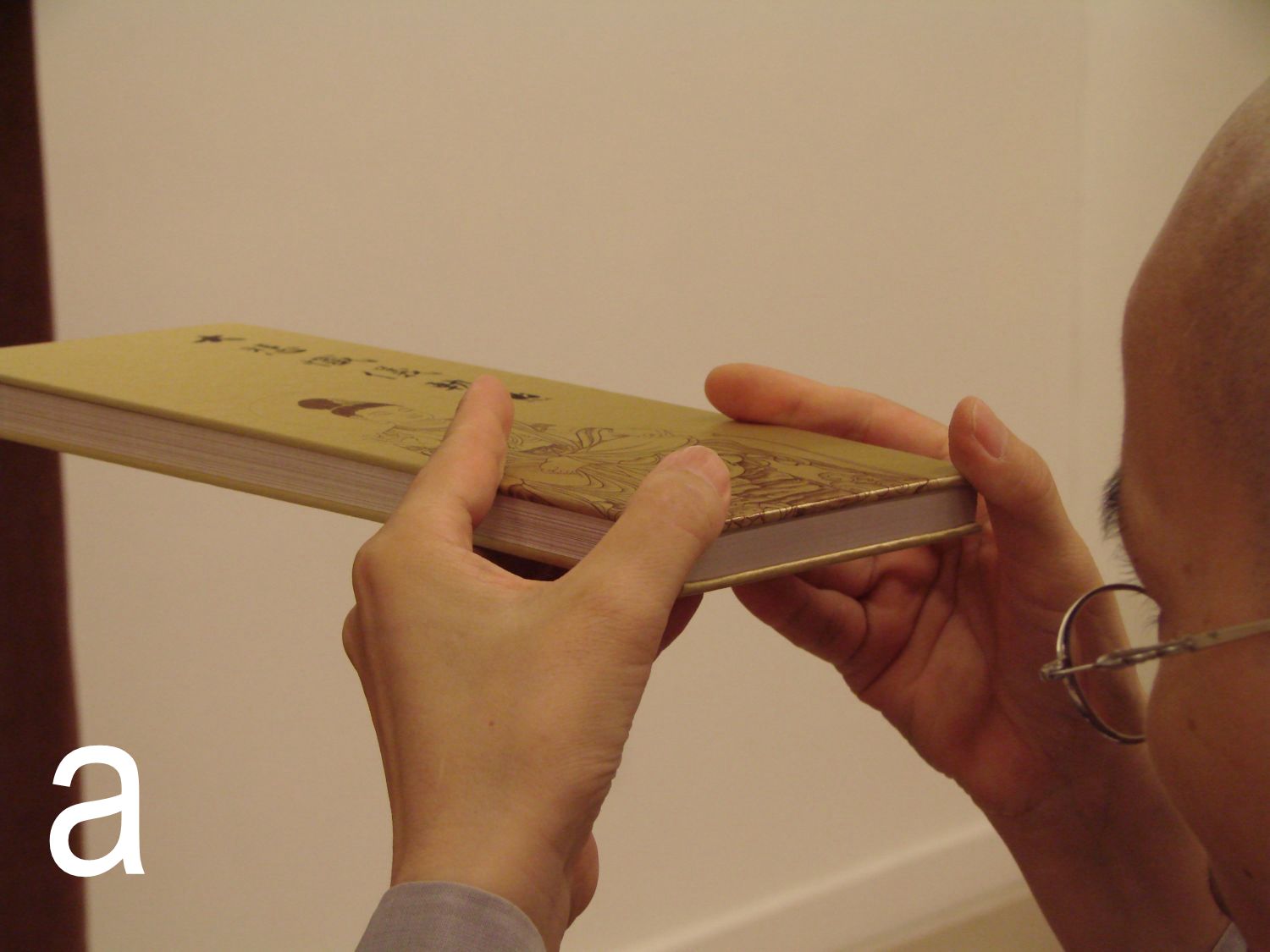 Each of these sutras has its own distinguishing characteristics. Take the Heart Sutra, for instance. It is the shortest sutra in Mahayana Buddhism, containing only 267 Chinese characters, according to Master Xuanzang's translation. Yet its concise content expressed in condensed language nonetheless presents the essence of the Buddha's wisdom and the Buddhist idea of "emptiness," making it widespread. The Chapter on the Universal Gate of Avalokitesvara Bodhisattva in the Lotus Sutra shows Guanyin Bodhisattva's great compassion and wisdom in saving sentient beings, and therefore touches countless believers and devotees.
Each of these sutras has its own distinguishing characteristics. Take the Heart Sutra, for instance. It is the shortest sutra in Mahayana Buddhism, containing only 267 Chinese characters, according to Master Xuanzang's translation. Yet its concise content expressed in condensed language nonetheless presents the essence of the Buddha's wisdom and the Buddhist idea of "emptiness," making it widespread. The Chapter on the Universal Gate of Avalokitesvara Bodhisattva in the Lotus Sutra shows Guanyin Bodhisattva's great compassion and wisdom in saving sentient beings, and therefore touches countless believers and devotees.The Sutra on Ksitigarbha Bodhisattva's Fundamental Vows is dubbed the Sutra of Filial Piety among Buddhist scriptures. It records the Buddha's Dharma talk to his mother after she was reborn in the Trayastrimsa (Heaven of the Thirty-three Gods). To glorify the occasion, countless Buddhas and Bodhisattvas gathered together in the assembly to praise Ksitigarbha Bodhisattva's great vow: "Not until all the hells are empty will I become a Buddha. Not until all beings are saved will I attain Bodhi. Not until the hells are emptied will I become a Buddha."
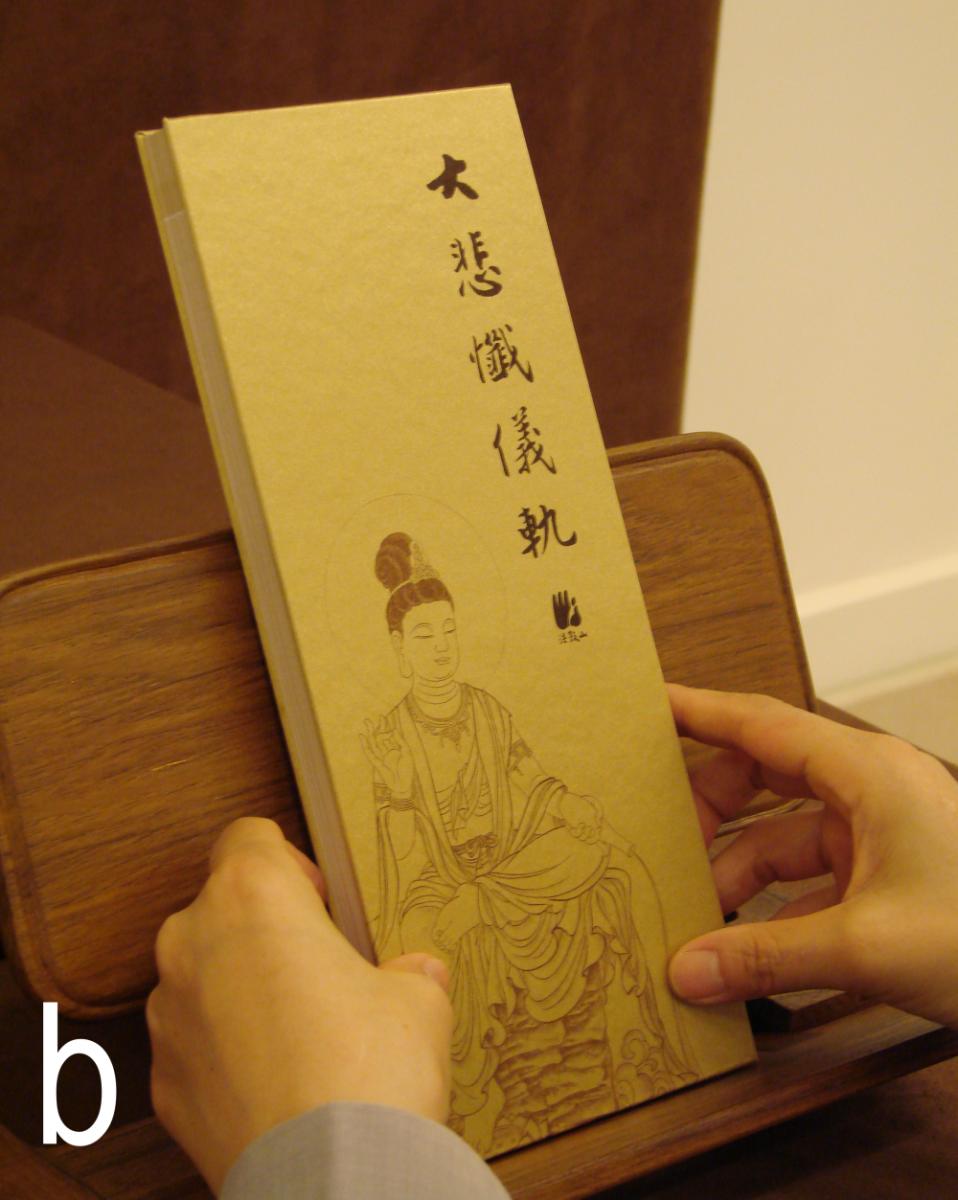 To save the sentient beings in hell, compassionate Ksitigarbha Bodhisattva vowed to stay there for an extended period of time. Therefore, many Buddhists recite this particular sutra for their deceased family members or friends, in the hope that the Bodhisattva can help the deceased leave their suffering behind and attain happiness.
To save the sentient beings in hell, compassionate Ksitigarbha Bodhisattva vowed to stay there for an extended period of time. Therefore, many Buddhists recite this particular sutra for their deceased family members or friends, in the hope that the Bodhisattva can help the deceased leave their suffering behind and attain happiness.The Diamond Sutra, which elaborates on the Buddhist idea of "emptiness" and non-attachment to forms, urges people to let go of clinging. One passage—"All conditioned phenomena are like dreams, illusions, bubbles, shadows, like dewdrops and a lightning flash: Contemplate them thus"—has especially inspired many.
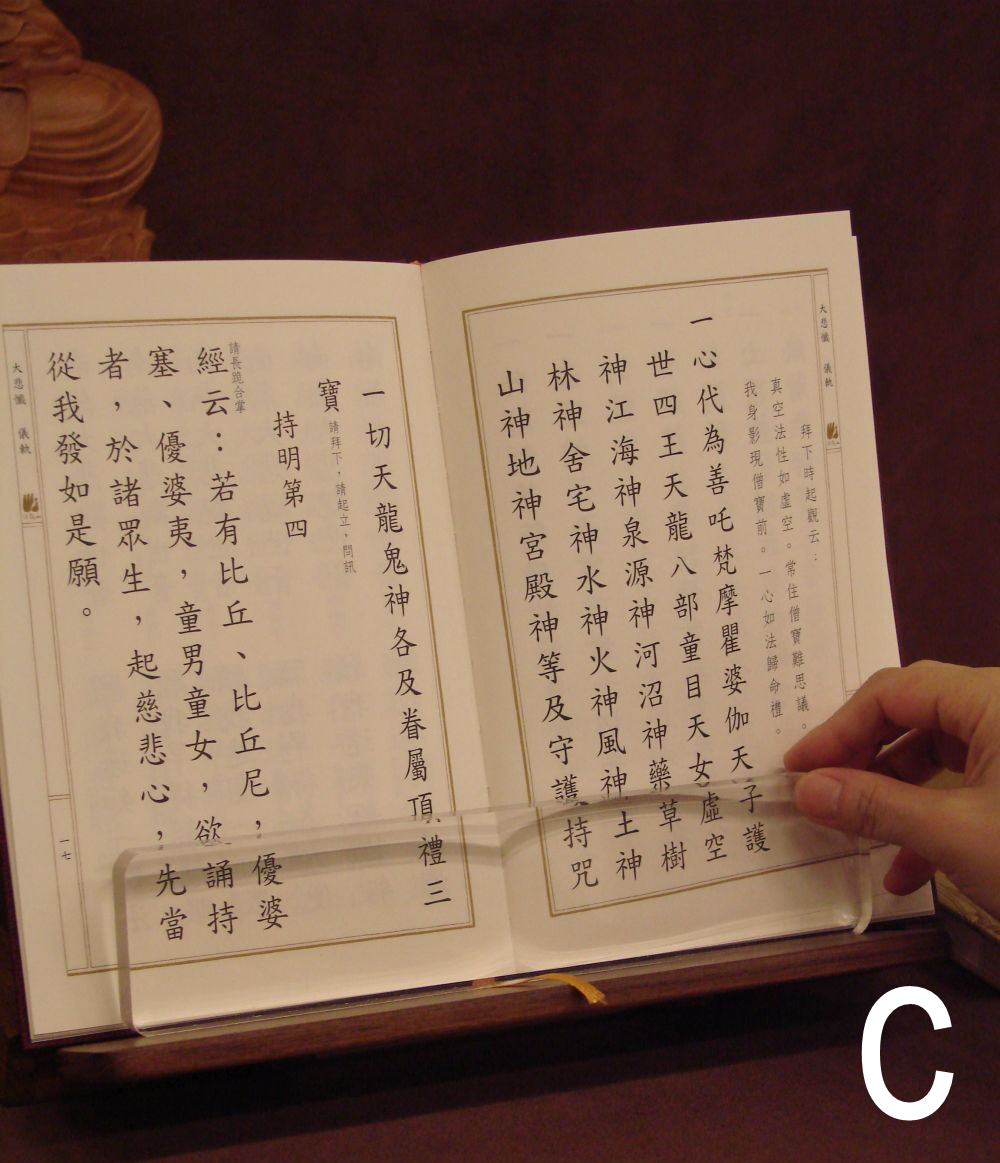 Whether at home or other places, reciting the sutra with peace of mind can help your mind calmly abide in the present moment, even in a noisy setting.
Whether at home or other places, reciting the sutra with peace of mind can help your mind calmly abide in the present moment, even in a noisy setting.When you recite sutras at home, hold the bottom of the sutra with the thumb and index finger of both hands on its cover, while supporting its back cover with the other fingers. Hold the sutra up to the eyebrow level as you bow to the Buddha.a Then, put the sutra on a book standb, make three prostrations to the Buddha, and start the recitation. You can use a paperweight to keep the sutra's pages from blowing in the windc. After the recitation, you can transfer the merit to sentient beings in all realms of existence, as well as to your family members, friends, or yourself, as a blessing.
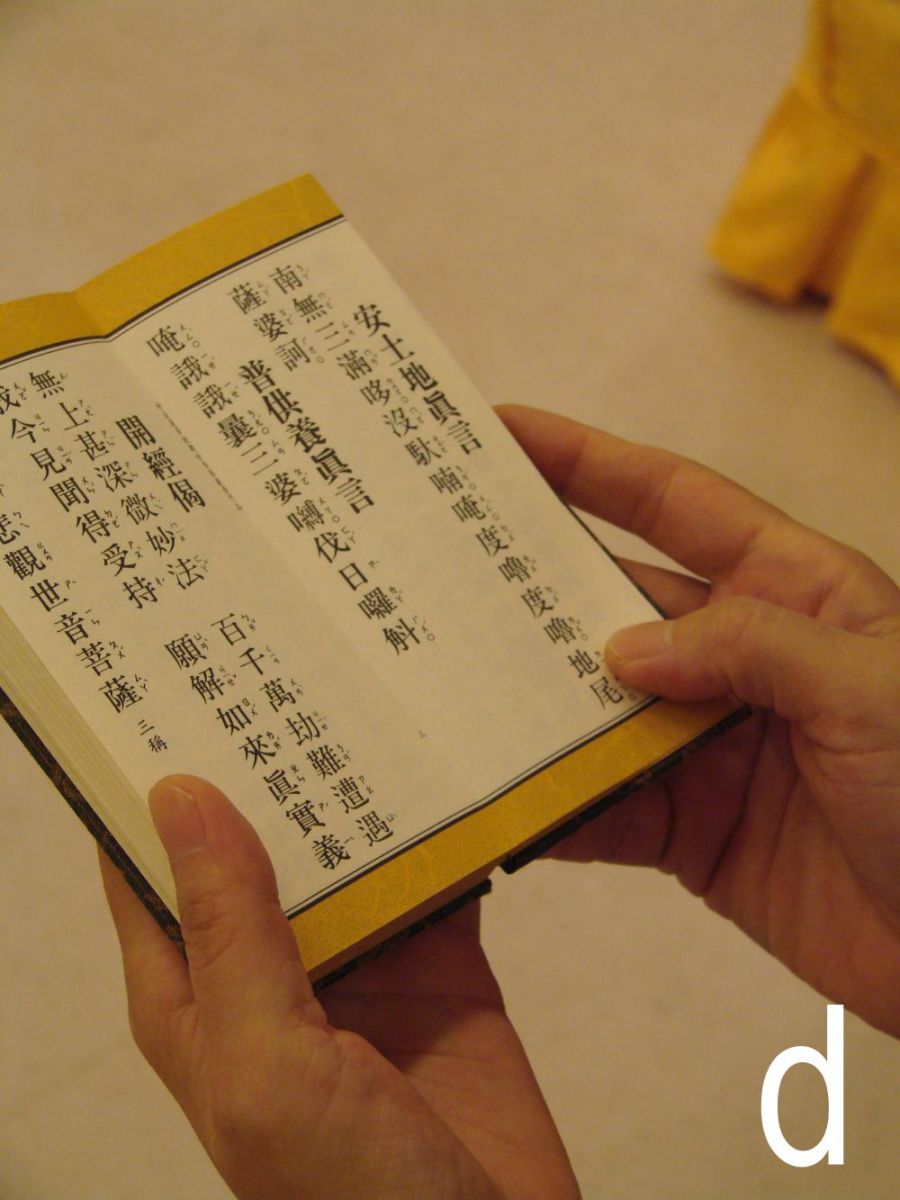 Then, to keep the Buddhist altar tidy, it's best to return the sutra back to a cupboard rather than with other irrelevant objects; put away the book-stand and the paperweight until the next period of recitation.
Then, to keep the Buddhist altar tidy, it's best to return the sutra back to a cupboard rather than with other irrelevant objects; put away the book-stand and the paperweight until the next period of recitation.On the other hand, when you are not at home, you can also recite sutras on the way to work or during your break time at work. It is not convenient to recite sutras outside your home, so rituals such as bows and prostrations to the Buddha, etc, can be done by visualization while you hold the Sutra with the joined palms in front of the chest. Then, open the sutrad and start reciting in a whisper. When you put the Sutra in your bag, keep it away from something that may stain it.
Demonstration
Reciting sutras at home:
1. Before the recitation, hold the bottom of the sutra with the thumb and index finger of both hands on the cover, with the other fingers supporting the back cover. Hold it at the eyebrow level as you bow to the Buddhaa.
2. After putting the sutra on the bookstandb, make three prostrations to the Buddha. Then, open the sutrad and start the recitation.
3. To keep the sutra pages from blowing, you can use a paperweight to keep the sutra steadyc.
2. After putting the sutra on the bookstandb, make three prostrations to the Buddha. Then, open the sutrad and start the recitation.
3. To keep the sutra pages from blowing, you can use a paperweight to keep the sutra steadyc.
Reciting sutras in an outside setting:
1. Rituals such as bowing and prostrating can be replaced by visualization while you hold the sutra with palms joined at chest level.
2. Read the sutra in a natural tempo and recite it softly or silently.
(Demonstrated by Ven. Guo Zeng of Dharma Drum Mountain)
Resource: Issue 294 of Life Magazine, Dharma Drum Publishing Corporation
Text: 林鍾妏 (Lin Chung-wen)
Translation: Hsiao Chen-an
Editing: Chang Chia-Cheng (張家誠), Keith Brown
Translation: Hsiao Chen-an
Editing: Chang Chia-Cheng (張家誠), Keith Brown
Extended Reading:
